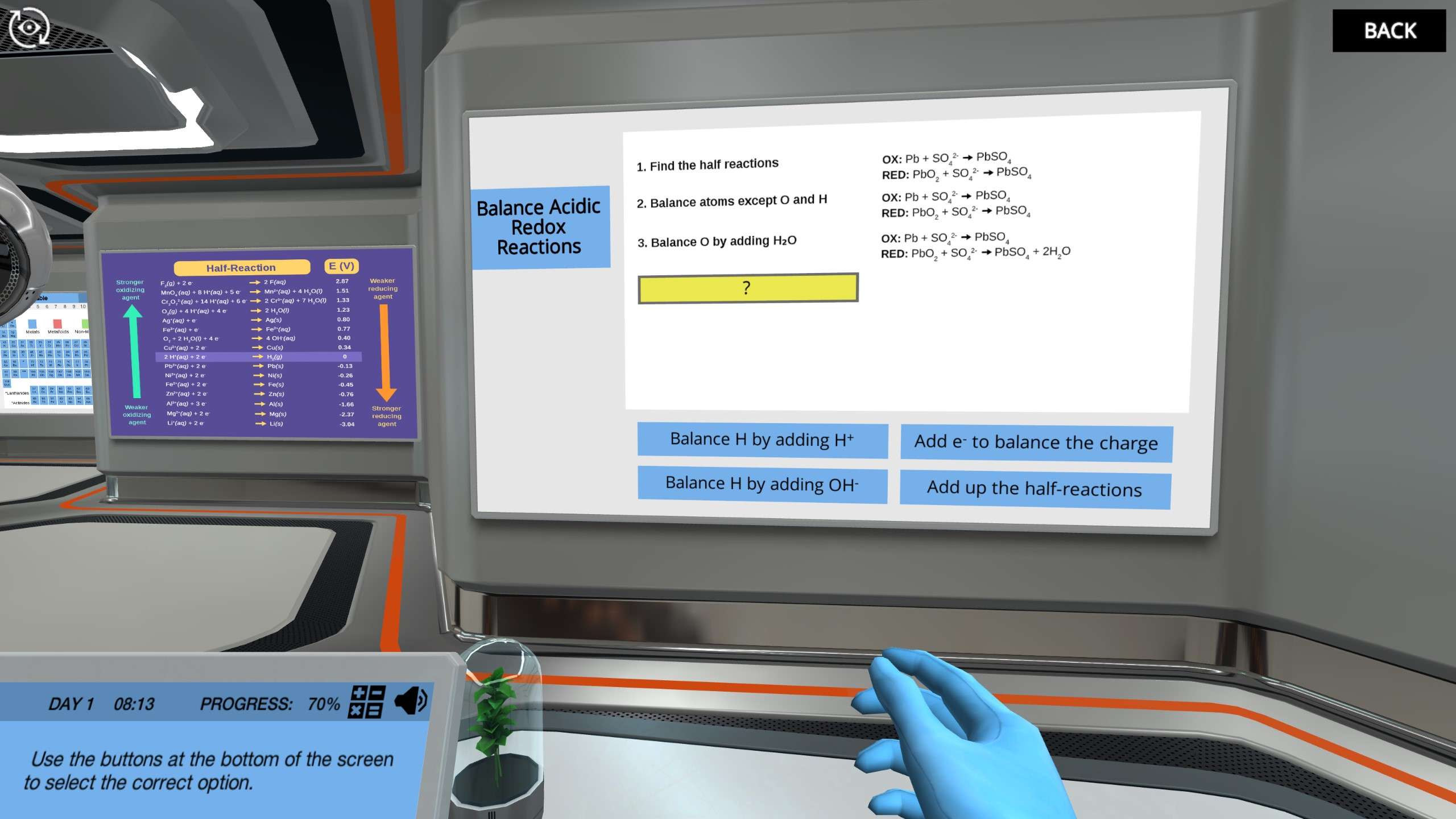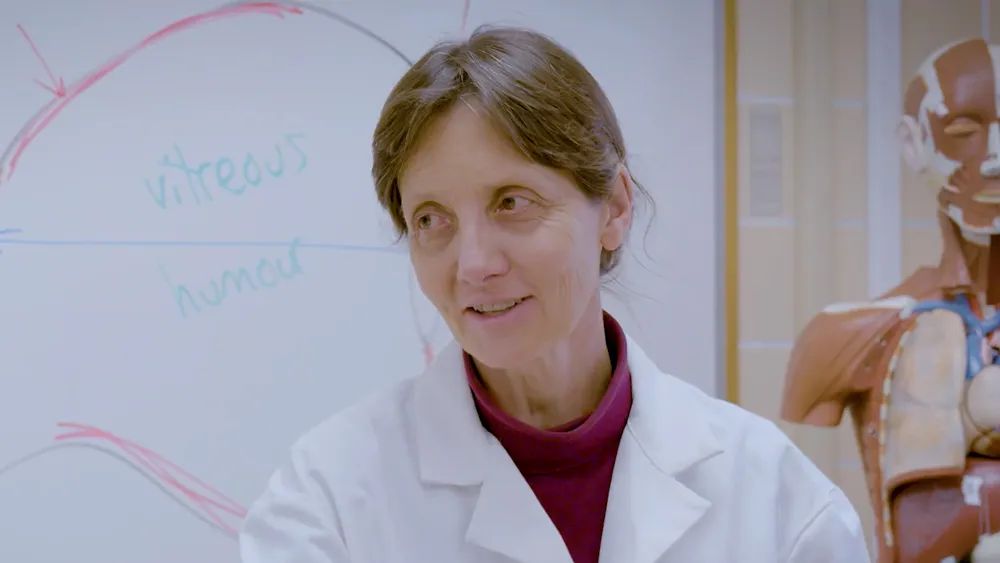Heading 1
Heading 2
Heading 3
Heading 4
Heading 5
Heading 6
Lorem ipsum dolor sit amet, consectetur adipiscing elit, sed do eiusmod tempor incididunt ut labore et dolore magna aliqua. Ut enim ad minim veniam, quis nostrud exercitation ullamco laboris nisi ut aliquip ex ea commodo consequat. Duis aute irure dolor in reprehenderit in voluptate velit esse cillum dolore eu fugiat nulla pariatur.
Block quote
Ordered list
- Item 1
- Item 2
- Item 3
Unordered list
- Item A
- Item B
- Item C
Bold text
Emphasis
Superscript
Subscript
About This Simulation
Build your own battery to power an electric car! Discover the chemical reactions that power batteries by finding oxidation numbers, balancing redox reactions, and experimenting with redox reactions in the lab.
Learning Objectives
- Describe the concept of oxidation states and explain trends in the periodic table
- Apply the rules for determining the oxidation state
- Describe the role of the electron in reduction-oxidation
- Predict the direction of redox reactions
- Balance a redox reaction in both acidic and alkaline environments
About This Simulation
Lab Techniques
- Galvanic cells
- Aqueous redox reactions
Related Standards
- HS-PS1-2, HS-PS1-5
- 4.9 Oxidation-Reduction (Redox) Reactions
- 9.1 Oxidation and reduction
Learn More About This Simulation
Oh no! Your electric car has broken down. Can you build your own battery to get moving again? Discover the chemical reactions that power batteries by finding oxidation numbers, balancing redox reactions, and experimenting with redox reactions in the lab, then make a recommendation to your friend Hansen about whether to replace his worn-out lead-acid battery with a new lithium-ion one.
Oxidation number and redox reactions
Join Dr. One in the redox chemistry lab to find out how redox reactions power batteries. Start by using the periodic table to predict the oxidation numbers of various compounds. Then balance the charges of half-reactions and see what happens to the oxidation numbers when electrons are lost or gained!
Redox potentials and balancing reactions
Develop and test a hypothesis about the reaction between copper and different aqueous solutions based on their reduction potentials. How can these potentials help you predict the direction of a redox reaction? Batteries can be both acidic and alkaline, so next up, join Dr. One to balance redox reactions one step at a time in both environments.
Optimize a galvanic cell
Now that you understand what a redox reaction is and what happens to the electrons, learn how this can be used to generate power in a galvanic cell. Experiment with different combinations of metal for the anode and cathode to find the most powerful duo. Will you be able to complete the reactivity series and discover another way of predicting the direction of redox reactions? Remember that you set out to find the best kind of battery to fix the electric car. With everything you now know about galvanic cells, what kind of battery do you recommend to your friend?
For Science Programs Providing a Learning Advantage
Boost STEM Pass Rates
Boost Learning with Fun
75% of students show high engagement and improved grades with Labster
Discover Simulations That Match Your Syllabus
Easily bolster your learning objectives with relevant, interactive content
Place Students in the Shoes of Real Scientists
Practice a lab procedure or visualize theory through narrative-driven scenarios


FAQs
Find answers to frequently asked questions.
Heading 1
Heading 2
Heading 3
Heading 4
Heading 5
Heading 6
Lorem ipsum dolor sit amet, consectetur adipiscing elit, sed do eiusmod tempor incididunt ut labore et dolore magna aliqua. Ut enim ad minim veniam, quis nostrud exercitation ullamco laboris nisi ut aliquip ex ea commodo consequat. Duis aute irure dolor in reprehenderit in voluptate velit esse cillum dolore eu fugiat nulla pariatur.
Block quote
Ordered list
- Item 1
- Item 2
- Item 3
Unordered list
- Item A
- Item B
- Item C
Bold text
Emphasis
Superscript
Subscript
A Labster virtual lab is an interactive, multimedia assignment that students access right from their computers. Many Labster virtual labs prepare students for success in college by introducing foundational knowledge using multimedia visualizations that make it easier to understand complex concepts. Other Labster virtual labs prepare learners for careers in STEM labs by giving them realistic practice on lab techniques and procedures.
Labster’s virtual lab simulations are created by scientists and designed to maximize engagement and interactivity. Unlike watching a video or reading a textbook, Labster virtual labs are interactive. To make progress, students must think critically and solve a real-world problem. We believe that learning by doing makes STEM stick.
Yes, Labster is compatible with all major LMS (Learning Management Systems) including Blackboard, Canvas, D2L, Moodle, and many others. Students can access Labster like any other assignment. If your institution does not choose an LMS integration, students will log into Labster’s Course Manager once they have an account created. Your institution will decide which is the best access method.
Labster is available for purchase by instructors, faculty, and administrators at education institutions. Purchasing our starter package, Labster Explorer, can be done using a credit card if you are located in the USA, Canada, or Mexico. If you are outside of North America or are choosing a higher plan, please speak with a Labster sales representative. Compare plans.
Labster supports a wide range of STEM courses at the high school, college, and university level across fields in biology, chemistry, physics, and health sciences. You can identify topics for your courses by searching our Content Catalog.












.png?fm=jpg&w=450&h=400)





